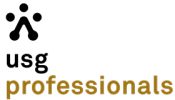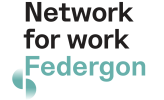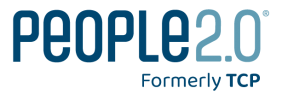Reverse mentoring: wat kunnen leiders leren van hun nieuwste medewerkers?
Mentoring geeft werknemers de kans om van hun leiders te leren. Maar wat kunnen leidinggevenden ontdekken van hun teams, en wat zou dit kunnen betekenen voor de STEM-sector?
Reverse mentoring is nothing new. In 1999, General Electric’s CEO Jack Welch used it to help senior executives learn about the internet. But fast forward to today and leaders are still grappling with new technologies – AI, for instance.
Data from our recent How the STEM world works research shows that employees are increasingly frustrated about their leaders’ resistance to new technologies. Just 11% of employees advocating for AI adoption say their leaders listen and implement new tools. The main reason for this? Executive digital illiteracy.
Employees are crying out for the opportunity to share their skills and perspective with leaders to capitalise on the AI opportunity. But how can your organisation implement these initiatives and what other benefits are on the cards?
Reverse mentoring bridges the AI skills gap
If leaders buy-in to AI, there is evidence to suggest they can unlock new potential for the technology that would otherwise go untapped. A study found that those with the highest domain expertise were most positively impacted by AI implementation. But they have to get the basics right and be open to learning before this can happen.
Listening is an important way for leaders to improve their AI skills, according to Wendy Murphy, Associate Dean of Undergraduate Academic Programs and Professor of Management at Babson College in the US. And that’s where reverse mentoring comes in. “When you have junior people who are digital natives, using tools that leaders may have never even heard of, you’re missing out if you’re not facilitating conversations with them,” says Murphy.
Reverse mentoring has wider value in STEM though. “STEM knowledge evolves so quickly that the most up-to-date insights often come from employees who have just graduated,” says Murphy. “Reverse mentoring is an opportunity for them to teach senior leaders about cutting-edge concepts.”
Leaders can still lead – by example
Rapid STEM advances are making continuous learning vital for every employee. Reverse mentoring allows leaders to model this behaviour and show that everyone can learn from each other. “If you’re not constantly learning, you’re going to be left behind,” says Murphy. “And what better way for senior executives to role-model a really important characteristic of successful leaders: being willing and open to learn from anyone, at any level?”
Reverse mentoring also reinforces the value of teamwork and collective intelligence. STEM work is complex, and bringing more heads together with different perspectives helps to solve problems and fuel innovation. For example, pioneering achievements such as rapid delivery of the COVID-19 vaccine, the Apollo 13 rescue mission and quantum computing would not have been possible without collaboration. If employees see their leaders prioritising collaborative initiatives such as reverse mentoring, then they’re more likely to work in a similar way – and that gives the organisation a competitive edge.
Soft power: Human skills are now crucial
Traditional mentoring focuses on the development of the junior member of staff, but reverse mentoring creates growth opportunities for both parties.
These growth opportunities include so-called soft skills such as communication, emotional intelligence and leadership, which are increasingly critical in the STEM sector. Our research shows that 60% of STEM professionals believe soft skills are more important for leaders than hard skills, and 67% say that the ability to inspire and innovate is more important than technical expertise. And these professionals say that reverse mentoring is one of the top three ways for leaders to balance their hard and soft skills.
By interacting closely with their junior mentor, an executive can learn more about how to communicate with members of the wider workforce. They will also find out which qualities these employees value in their leaders. The mentors, meanwhile, will build up their own leadership skills. “Mentors gain a reputation of being able to develop others,” says Murphy. “Which is a very important skill as you move up the hierarchy and into management roles.”
Empower junior staff, improve morale, retain skills
Another benefit of reverse mentoring is its effect on workforce morale. Younger employees – such as Gen Z talent – are eager to contribute and want to have their voices heard at work. But they can find it difficult to see how their work fits into the bigger picture.
“In an entry-level role, it’s really hard to see how your work affects the broader organisation,” says Murphy. “But the senior mentees can help you make those connections and explain how you doing particular tasks is connected to the company’s overall goals.”
Engaging younger members of staff in this way has never been more critical, because giving employees a sense of purpose will help organisations to hold on to them. The STEM industries are already facing skills gaps, and a wave of baby boomer retirements in the coming years will only exacerbate this.
The problem with reverse mentoring is busy people
Unfortunately, reverse mentoring is not always easy to set up. The biggest obstacle? Time. Executives might be keen to participate, but these are busy people and conflicting commitments can get in the way. If that happens too often, reverse mentoring could backfire.
“If junior employees reach out to their mentees, but are repeatedly rebuffed or cancelled, they will just give up,” says Murphy. “Because they don’t know how to cope with that.”
So it’s important that leaders treat reverse mentoring sessions as seriously as any other commitment. One way to do this is by factoring participation into their performance reviews. But busy people have busy inboxes, and even the most willing participants might struggle to keep on top of mentor communications. Murphy recommends establishing a back-up plan.
“In my reverse mentoring programmes I often have both participants sign a contract where they share the best way to contact them if they haven’t responded after two emails,” says Murphy. “It could be providing a different communication channel, such as phone or direct message. Or it could even be giving express permission to hound their assistant until the session is booked in.”
How to set up a reverse mentoring scheme that works:
1. Appoint a scheme coordinator
It’s important to have a dedicated point person to field queries and, if needed, get things back on track if either party has a problem. This could be a member of the management team or someone in HR.
2. Provide training and topics from the start
Open conversations between mentors and mentees should be encouraged, but some training before their first meeting will help the participants understand the overall goals. It’s also helpful to give them some ideas for talking points to get them through any initial awkwardness.
3. Share what people are learning
Bringing people together at set points during the programme helps to maintain momentum. You can also separate mentees and mentors to create tailored sessions. The senior participants can share what they’re learning, and the junior employees can talk about the tactics they’ve used to lead the sessions.
For more information about SThree, click here.
Bron: SThree
Lees ook :















